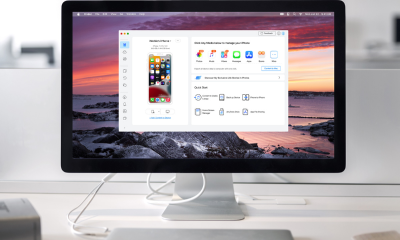Personal Finance
Flood insurance costs have risen for more than half of policies: FEMA

Federal Emergency Management Agency (FEMA) recently released data that shows how flood insurance premiums changed following the implementation of Risk Rating 2.0, its latest methodology for calculating flood insurance costs for the National Flood Insurance Program (NFIP). As a result of these updates, many parts of the country could see their flood insurance costs go up.
In fact, one South Florida zip code could see flood insurance premiums increase by 342%, according to an analysis by Miami Herald.
But policyholders won’t see these increases all at once. Federal law caps flood insurance price hikes at 18% a year. This means some people will see their flood insurance go up each year until it meets the Risk Rating 2.0 standards.
Following the release of Risk Rating 2.0, 66% of NFIP premiums have increased by at most $10, according to FEMA data. Meanwhile, 3.6% of policy premiums have gone up by more than $20.
If you’re concerned about your overall housing costs, you can save by shopping around for home insurance policies. Visit Credible to compare options from different companies without affecting your credit score.
HOME PURCHASE SENTIMENT INCREASED TO HIGHEST LEVEL SINCE LAST YEAR
Where has flood insurance increased the most?
Across all states and territories, the average cost of flood insurance was $888 per policy prior to Risk Rating 2.0, according to FEMA data. With Risk Rating 2.0, the average cost of insurance is projected to be $1,808.
Here are some of the states that could see the most expensive flood insurance costs on average, based on FEMA’s Risk Rating 2.0, which was implemented in October 2021 for new policies and in April 2022 for policies that were renewed.
- Hawaii: $3,653
- West Virginia: $3,074
- Connecticut: $3,000
- Maine: $2,700
- New Hampshire: $2,545
- Guam: $2,438
- Vermont: $2,248
- Florida: $2,213
- Kentucky: $2,201
“The new methodology allows FEMA to equitably distribute premiums across all policyholders based on the value of their home and the unique flood risk of their property,” FEMA said in a press release before the new rating was implemented. “Currently, many policyholders with lower-value homes are paying more than they should and policyholders with higher-value homes are paying less than they should.”
Risk Rating 2.0 steers away from old flood zone maps and focuses on various factors such as a property’s distance from the ocean and the costs to rebuild a home.
“With Risk Rating 2.0, FEMA is updating a 50-year-old rating system to price each home individually – rather than by flood zone – and more accurately using modern insurance industry technologies, standards, and science,” the National Association of Realtors (NAR) said in a post.
“Under Risk Rating 2.0, some NFIP rates will increase while others will decrease, depending on each home’s flood risk and replacement value,” NAR continued. “Under the previous system, all rates would continue to climb 18% to 25% every year until reaching $63,000 for a $250,000 home under many policies.”
If you want to save on your overall home costs, you could compare quotes from different home insurance companies. Visit Credible to get your personalized quote in minutes.
FED’S MAY INTEREST RATE HIKE COULD HARM REGIONAL BANK LENDING, MORTGAGES, EXPERT WARNS
Climate change has impacted home insurance costs: Insurify
Climate change has affected the costs of home insurance, according to the 2023 Insuring the American Homeowner report by Insurify.
“Climate change is one of the main drivers behind the home insurance increases consumers saw last year and will continue seeing this year,” Plymouth Rock Assurance and Grange, two home insurance companies, said to Insurify.
But measuring the impact of climate change on home insurance policies is challenging, Insurify said. For every one-point increase in a county’s FEMA risk index score (scaled from zero to 100), homeowners can expect to spend an extra $24 in annual home insurance premiums, according to Insurify’s analysis of FEMA’s data.
FEMA says changing climate conditions has partially driven its decision-making in implementing the Risk Rating 2.0 methodology.
And climate change has been a major concern among some homeowners, according to Insurify. In fact, 45% of homeowners said climate change has affected the value of their homes, Insurify found. In addition, 76% said they believe climate change would be an issue in the future.
“Rising interest rates, inflation, concerns over climate change and climbing insurance premiums all rank among the top homeowner concerns,” Insurify said in its report.
If you’re worried about increases to your home insurance costs, it can help to explore different home insurance quotes. Visit Credible to speak with an insurance expert and get your questions answered.
AUTO INSURERS PLAN FURTHER RATE INCREASES THIS YEAR – HERE’S HOW YOU CAN GET COSTS UNDER CONTROL
Have a finance-related question, but don’t know who to ask? Email The Credible Money Expert at moneyexpert@credible.com and your question might be answered by Credible in our Money Expert column.
Read the full article here

-

 Side Hustles5 days ago
Side Hustles5 days agoHow to Create a Unique Value Proposition (With Tips & Examples)
-

 Side Hustles5 days ago
Side Hustles5 days agoThe DOJ Reportedly Wants Google to Sell Its Chrome Browser
-

 Investing4 days ago
Investing4 days agoAre You Missing These Hidden Warning Signs When Hiring?
-

 Make Money4 days ago
Make Money4 days ago7 Common Things You Should Never Buy New
-

 Investing6 days ago
Investing6 days agoThis Founder Turned a Hangover Cure into Millions
-

 Investing1 day ago
Investing1 day agoThis All-Access Pass to Learning Is Now $20 for Black Friday
-

 Investing4 days ago
Investing4 days agoGoogle faces call from DuckDuckGo for new EU probes into tech rule compliance By Reuters
-

 Side Hustles2 days ago
Side Hustles2 days agoApple Prepares a New AI-Powered Siri to Compete With ChatGPT


















